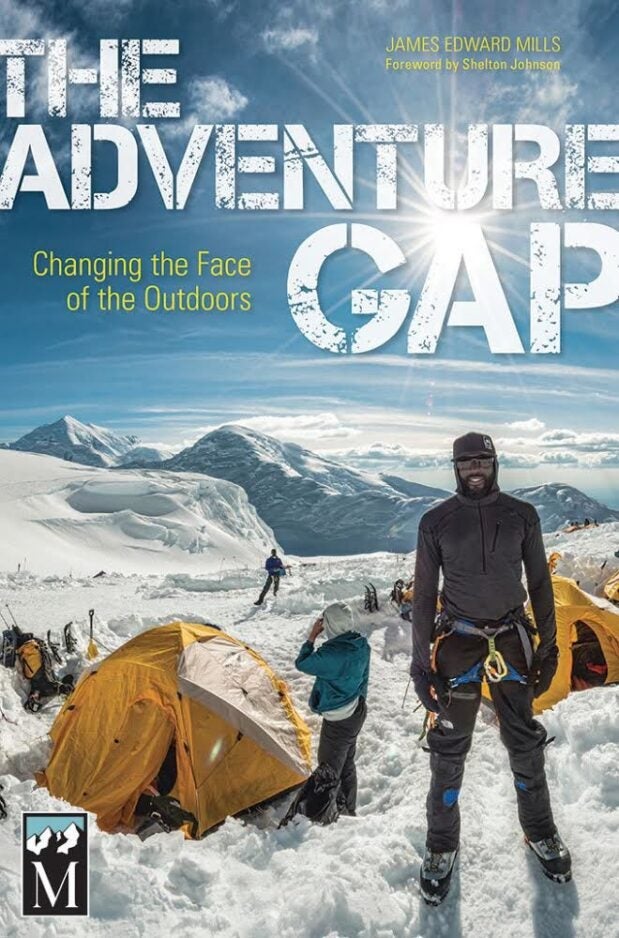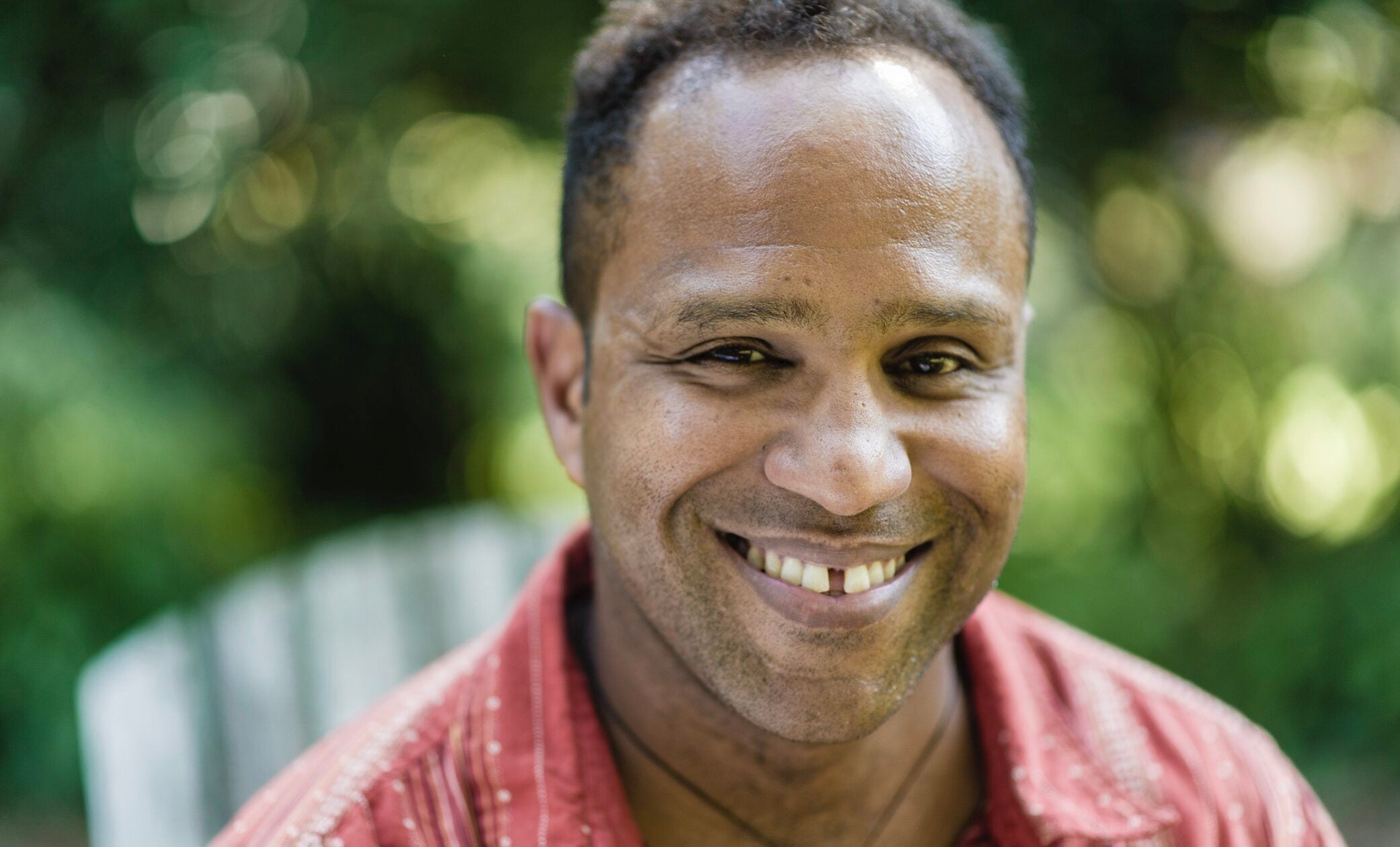In 2008, James Edward Mills’ perception of American history was changed forever.
While interviewing filmmaker Ken Burns about his documentary series The National Parks: America’s Best Idea at Outdoor Retailer, the journalist and founder of The Joy Trip Project asked a question that would eventually alter the course of his professional life. “What are you going to do to tell the stories of non-white people in this documentary?” Mills asked Burns.
Burns explained that the series would surface narratives of Black people in the national parks that haven’t historically received media coverage, like how the Buffalo Soldiers, a Black cavalry in the Civil War, were the first protectors of Yosemite in 1909.
“Wait a minute,” Mills recalled thinking. “The Buffalo Soldiers were in Yosemite in 1909?” He could hardly believe it. “I grew up in California,” he said. “I lived and worked in Yosemite for several years, and I was hearing this story for the first time.”
The conversation with Burns was a revelation for Mills. If there was one story about Black people in the outdoors he wasn’t aware of, he realized, there were probably many more. “It was the beginning of my interest in the relationship between people of color and the outdoors—specifically in regard to national parks,” he said.
That interest took him on a research trip through history. The result, a book of stories exploring the narratives of Black Americans in the outdoors, is called Unhidden, and it’s forthcoming from National Geographic.
A Lifelong Love of the Outdoors
Mills’ fascination with the outdoors began early in life. As a child, he belonged to a Los Angeles Boy Scout troop that regularly embarked on camping and hiking trips around Southern California.
“Growing up, I assumed everybody had some outdoor experience,” Mills said. “I didn’t realize I was different.”
After graduating from college, Mills sold camping equipment at REI and worked as a guide and outfitter before eventually transitioning to The North Face’s customer-service department. At 25, he became TNF’s regional Midwest sales representative, and although he was good at it, it started to change his perspective of the industry. By the mid-2000s, he had gone from advocate to skeptic based on what he saw as the insular and blinkered nature of the outdoor economy.
“I started to get frustrated that we were only selling products to each other,” he said. “The outdoor industry wasn’t talking to the people I went to high school with and many of the people I went college with. As an industry, we weren’t doing a good job of expanding the market to emerging demographics.”
Mills wanted to help the industry understand how much it lacked in terms of diversity—but he didn’t consider his position as a sales representative an effective way to do that. His wife was a reporter for Wisconsin Public Radio, a career he greatly admired, so he started to consider journalism as a means by which he might be able to affect change. It wasn’t until the September 11 attacks, however, that Mills decided to commit himself fully to that path.
“When it happened, I realized the whole world had changed,” Mills said. “I was working for Columbia at the time, and all I could do that day was sell shoes.” Being able to tell stories seemed like a better way to make a dent in the world’s problems.
In 2003, he became a business reporter for the Wisconsin State Journal to hone his journalistic skills and break into the business. Three years later, he began to look for opportunities in his old stomping ground, the outdoor industry.
He found one, as luck would have it, while surfing ���ϳԹ��� magazine’s website. A story had recently been published about a friend of his, the rock climber Todd Skinner, who had died in an accident in Yosemite. Mills decided he wanted to cover the funeral. He reached out to a friend who worked at ���ϳԹ��� Business Journal (at the time called Snews) about taking on the assignment. The editor agreed.
Rather than write the story as an article, Mills decided to create an audio segment, which became the first episode of Snews’ inaugural podcast. Based on the success of his piece, Mills was offered a full-time position at the publication. He took it, but was laid off quickly thereafter when the recession hit in 2008.
Finally, in 2009, he created his own media organization, The Joy Trip Project—a blog, website, and podcast covering outdoor recreation, conservation, and sustainability. With his new platform, Mills was finally able to write about the relationship people of color have with outdoor spaces—his goal since the beginning.
Writing ‘Unhidden’
As The Joy Trip Project grew in scope and influence, Mills began working with National Geographic, a partnership that gave the global media brand confidence in Mills’ ability to write a book. When he finally pitched it to them, they had few reservations.
Unhidden will be part narrative and part travel guidebook, with photographs by Kris Graves, whose work appeared on the cover of National Geographic’s 2020 Year in Pictures issue.
“Graves and I will go around the country to places managed by the National Park Service that have significant stories about Black people in American history,” Mills said. “The book will start in Florida and follow the expansion of the Spanish conquest, taking readers north and ending in Alaska.”
By examining the national parks through the lens of Black stories, Mills hopes to show how integral Black people have been to the country’s history and outdoor spaces. “I’m hoping that people of color will see themselves as part of the entire narrative,” Mills said.
Some of the stories in Unhidden will include the first all-Black American summit attempt of Denali (also covered in Mills’ first book, The ���ϳԹ��� Gap, published by Mountaineers Books in 2014), the construction of Fort Monroe in Virginia by enslaved Black men, and the multi-generational saga of Black tour guides of Mammoth Cave in Kentucky.

“History has been told almost exclusively through the white gaze, but by casting the Black gaze on the narrative, we find these hidden stories and see the Black presence in the outdoors in every moment in American history,” Mills said.
Perhaps most important, the book will make connections between the past and the present, to show how Black people not only impacted the creation of our national parks, but how that influence ripples forward to impact future generations. Unhidden will draw parallels, for instance, between the first Black man to climb Denali, Dr. Charles Crenchaw, and the first all-Black American Everest expedition, which will attempt to summit the mountain this summer.
These and other stories will reflect and inform each other, Mills explained, as they intersect with some of the greatest chapters in American history, like the Civil Rights Movement. “On July 2, 1963, Dr. Martin Luther King Jr. looked over the shoulder of Lyndon Johnson as Johnson signed the Civil Rights Act into law,” Mills said. “Seven days later, Crenchaw summited Denali and literally personified King’s ‘I Have a Dream’ speech, which alludes to climbing mountains. It just shows that spending time outdoors is another act of civil rights.”
Some of the stories in Unhidden even echo multiple times across history, forming a mosaic of meaning. Two hundred years after the first enslaved people from Africa landed at Hampton, Virginia, in August 1619, enslaved Black men built Fort Monroe on the same site between 1819 and 1834. Fort Monroe became a significant military outpost in the Civil War, acting as a jumping-off point for Union campaigns into the Confederacy, and later served as a refuge for slaves escaping the South. It eventually became known as the “first self-contained Black community in the nation,” according to the National Park Service. The 400-year saga of Hampton, Virginia and Fort Monroe will be laid out in the book to illustrate its importance through time, leading right up to today.
“If you fast forward to 2012, the first national monument designation from the first Black president was Fort Monroe by Barack Obama,” Mills said. “As time compresses in the same spot, you get four pivotal moments in American history with Black people as the focus.”
Hopes for the Project
Unhidden is slated for publication in 2024, and Mills is deep in the research phase. Still, he’s already looking ahead to his next big project, he said.
“My next book [will be] a biography of Matthew Henson, the first Black man to make it to the North Pole in 1909,” said Mills. It will examine Henson’s life as an explorer and discuss how people of color will play a major role in preserving outdoor spaces and fighting climate change in the future.
Mills may be diving into history with his books, but he says he’s constantly confronted with evidence that they’re more relevant today than ever. At the Outdoor Retailer Snow Show this January, Mills was given a photograph of a class of high school students holding copies of his first book, The ���ϳԹ��� Gap. They had all read it and absorbed its lessons. (Watch Mills explain some of the principles of that book in the video below.)
“We have people [in this country] who are trying to prevent us from teaching history, and my book is now in schools,” Mills said. “It means a lot to me that I’m someone who has helped to push forward a conversation that kids are now learning about.”
Ultimately, Mills hopes Unhidden shows the outdoor industry what he learned long ago—that recognizing these histories is crucial to building a better outdoor space and a better future.
“Black folks helped create what we now call America,” Mills said. “Once people know these stories and see outdoors access as a civil rights issue, I hope they ask themselves, ‘What am I going to do? What’s next?’”


